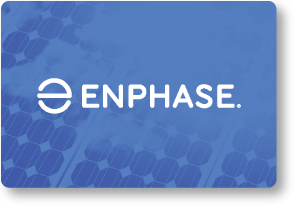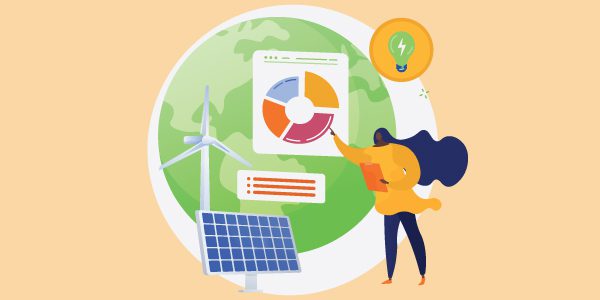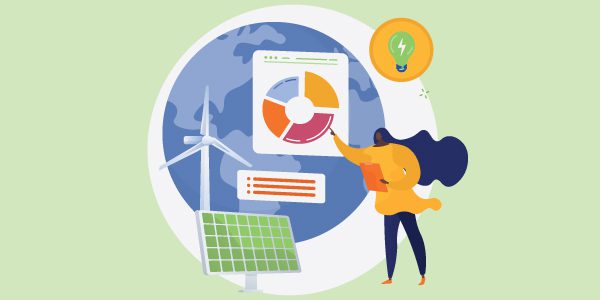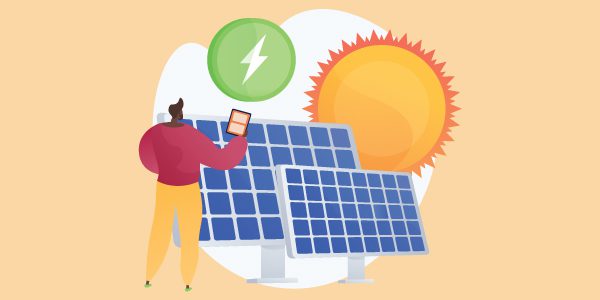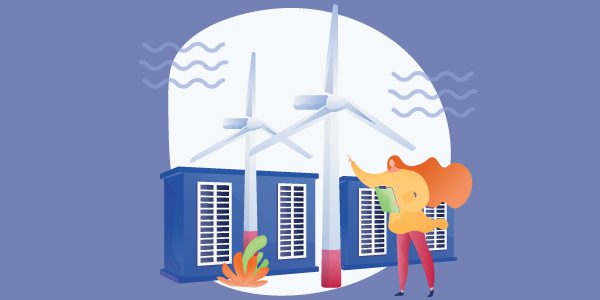Is wind power going to finally get a foothold in France?
The unofficial home of nuclear power is finally making headway towards wind energy. Wind power has been a long-running contentious issue in France, and last year, the debate reignited at the presidential election level. The two opposing candidates, Emmanuel Macron and Marine Le Pen, were polar opposites on the issue, with Macron pledging to build 50 parks by 2030 (at 40 GW each) and Le Pen wanting to not just stop wind projects but remove existing ones and outright ban them.
Although Macron was elected, the issue rages on. With public opposition paired with convoluted processes and regulation, wind power is struggling to grow in France. It also doesn’t help that wind power is going up against nuclear power which has a long and profitable history with France; in fact, a whopping 70% of France’s energy comes from nuclear power. And while there are questions surrounding the sustainability and ‘renewable energy’ status of nuclear energy (although the European Parliament has voted in favour of considering it as clean energy), nuclear power is still highly favoured and it certainly helps that nuclear power is a considerable economic and strategic advantage for France.
Firstly, the generation is cheap and more stable (compared to countries relying on importing electricity) for consumers and the excess energy can be exported for a pretty penny (or, in this case, a euro cent). In fact, France is one of the world’s largest net exporters of electricity and rakes in 3 billion euros a year from it. However, with the nuclear facilities ageing and more than half of the 56 reactors shutting down last year due to a host of issues, the output has been dwindling; in fact last year, France was a net-importer of electricity for the majority of the year because of it.
Only this year have they managed to export electricity again with a combination of a mild winter, wind production, and the restarting of nuclear reactors. With wind energy helping France, now might well be the perfect time to increase the wind power ratio. In saying that, from the way it looks, it will be a slow transition, because although the government had promised a reduction in nuclear reactors in the wake of the Fukushima disaster, Macron has already committed to building six new reactors over the coming decades. This move highlights France’s rock and hard place situation that is keeping it from fully embracing renewable energy.
Rock, Hard Place
France needs to meet its climate energy targets. However, they currently don’t have the renewable energy capacity to do it. But what do they have? Profitable and “sort-of” renewable power source, nuclear energy. So why “sort-of”? Although nuclear energy is not a renewable energy (it’s instead recyclable), it is considered a green energy, so it’s good enough against the current standards. Not the best, but it scrapes through. This semantic loop-hole gives France a pass, slowing and blocking any attempt to diversify their renewable energy mix and letting nuclear energy remain powerful. After all, it’s better to work with what you know (nuclear energy) than to work with what you don’t (wind energy).
Nuclear Power in France History
Nuclear power has been a staple in France for over 40 years. In the 1970s, an oil crisis resulted in the French government making a strategic decision to invest heavily in nuclear power in order to reduce its dependence on imported energy sources (fossil fuels) and ensure energy security. And they haven’t looked back, for good reason. Today, nuclear power provides over 70% of the country’s power and has helped France become one of the world’s largest exporters of electricity.
So it’s great for residents, as it’s cheaper than importing fossil fuels, and it’s a fantastic moneymaker for the economy. It also, as we’ve already seen, has the backing of the French government, which has remained committed to nuclear energy since all those years ago, citing its reliability, cost-effectiveness, and low greenhouse gas emissions. Nuclear power has served France well, but now is the time to move forward, and going off of last year’s electricity crisis where France became a net-importer of electricity for the majority of the year, the first time in 42 years – it’s time to move quickly.
Why Wind Energy?
Wind is a very strong and reliable renewable energy source. Wind does not rely on water, which is a problem in times of drought for nuclear energy. Nuclear energy requires a lot of water to keep the plant cool and in most cases, it must be fresh water. Without water, electricity output significantly lowers. This was evident during last year’s dry spell across southern Europe, which combined with ageing facilities, had France’s nuclear power output reduced by almost 50%.
Wind power is also becoming cheaper than nuclear power. The 2019 report from the World Nuclear Industry Status Report (WNISR) estimated levilised costs (the average cost of generating a unit of electricity over the lifetime of a power plant, taking into account all costs and factors such as construction, fuel, and maintenance) have decreased for solar and wind energy by 88% and 69%, respectively. A stark contrast to nuclear’s 23% increase. Additionally, the potential for wind energy in France is significant. The country has the second-largest wind potential in Europe, just after the United Kingdom.
France Wind Barriers
The French Wind Energy Association (FEE) has identified two main barriers to France’s burgeoning wind industry; changing rules and environmental impact studies, resulting in slow movement.
1. Changing Rules
One of the biggest hindrances to the proliferation of wind energy in France is the changing of rules and regulations regarding projects. For example, in 2021, the defence ministry declared that wind turbines can interfere with military signals and, therefore, must be moved 70km away from military radar installations compared to the original 30km, significantly reducing land area. Additionally, mayors were also given significant power to veto any new installations and have the projects presented to the local council first. These changes drastically affect wind turbine projects and make it harder than ever for companies to build them.
2. Environmental Impact Studies & Slow Movement
Environmental impact studies are absolutely crucial for any project, and they are needed. However, in France, the stringent process can significantly slow the project from moving forward or stop it altogether. To determine whether the project can go ahead, a local committee that works with military, civil aviation, and meteorology representatives has to give its approval. With so many representatives and factors, the process can move very slowly. In fact, in 2019, it was reported that it has a 6-8 year lead time, more than double the European average. Offshore wind is not much better, it will take 10 years in France compared to 5 in Germany. However, Macron’s goal to accelerate offshore wind has aimed to reduce this to 5-6 years through regulation, but time will tell if that goal comes to fruition.
Wind Energy Criticisms
There is also the issue of wind energy criticism, of which there are many. Although, many years ago these critiques would have been justified, with so much technological advancement, many of these problems are arguably minor and have solutions. The criticisms include: the fact that it’s an intermittent source, the potential disruption of habitats and the landscape, and noise pollution.
1. Intermittent Source
Wind energy is an intermittent source, which means that it does not have a steady flow of power. So, some days there’s more energy (therefore, cheaper) and less on others (therefore, more expensive). Sometimes, the wind is not strong enough to move the turbines, which means no power at all. While this would have been a problem many years ago, we now have a solution: pair wind farms with energy storage. So that in times where energy output is lower, there is a reserve of energy ready for consumers. Energy storage is also becoming more sophisticated, and its capabilities are increasing. One study found that battery storage could hold up to 72 hours of wind-produced energy. So, it’s a viable option.
2. Land Disruption
Wind turbines are big. You can see them from kilometres away and to some people, they are considered an eyesore. So, there are concerns of them disrupting the natural landscape and its habitat. They also take up a lot of land. However, that doesn’t mean there isn’t a solution. Wind farms can be dual purpose, for example. Farming activities can still be conducted on land with wind turbines, due to the distance between the turbines and wind farms. Additionally, choosing areas that have infertile soil is a way to prevent habitats being destroyed. On top of that, we have the option of offshore wind, which will be discussed later.
3. Noise
The question of noise is another issue with wind energy. However, the positive is that turbines are quieter now than they were in the past. Technological advancements and considerations made to reduce noise have minimised the sounds of turbines. Changes to the design, like upward rotors, the gearbox, and turbine blades, have helped significantly. Nowadays, a wind turbine 300 metres away produces 43 decibels—just louder than a refrigerator.
Offshore Wind: A Solution?
France’s first commercial offshore wind farm, Saint-Nazaire, started full operations in November last year and has added 480 MW to the grid; it will have the ability to power the equivalent of 400,000 homes a year. Offshore wind might well be the solution for France… The government agrees, and has already committed to building 18 GW of offshore wind farms by 2025 and 40 GW by 2040.
These projects will create a lot of direct and in-direct jobs, with an estimated 20,000 by 2035, a stark contrast from 2021’s number of 6,000. Besides being good for the economy, these offshore wind projects can also avoid the pitfalls of land-based projects that are disliked due to their disruption of the landscape and noise. There is also the added bonus of their location, which receives more wind and subsequently, leading them to generate significantly more power. However, that’s not to say they don’t have their issues:
1. They are expensive to build
Offshore wind farm installation costs can be up to 20% more expensive than onshore wind, and floating offshore wind is even more costly. The maintenance and running costs are also high. However, with it being more reliable and yielding higher energy (due to wind strength and consistency) than its onshore counterpart, it could end up, according to research predictions, operating with negative subsidies in the future.
2. They can block crucial waterways
Europe, especially, is affected by the fact that there’s a significantly smaller amount of ocean space to place offshore wind. So much so that the Belgian government has made a formal complaint against the French government for their proposed 46-turbine wind farm based 10km off the shore of Dunkirk. The concerns of blocking critical waterways and obscuring the natural landscape have been cited as the main issues.
They have requested that the French government move it a further 7 km offshore (so 17 km in total). Depending on the length of the continental shelf, France might be able to keep them as fixed-bottom turbines; however, if the water is too deep (over 50 metres), there is also the possibility of floating offshore wind. These kinds of issues (particularly when concerning territorial waters) can be avoided by intergovernmental collaboration.
The French government is keen to accelerate wind power. The only question is, are they ready for it? Nuclear energy has served France very well for the past decades, but now time is running out. Red tape needs to be tackled and a sincere commitment needs to be made and followed through to ensure that France can kickstart their wind energy era. France has been given a lifeline (where they can still use nuclear energy for the time being) to shift from nuclear to renewable energy, and it’s time they take advantage of it.



